-
Posts
2,020 -
Joined
-
Last visited
Content Type
Profiles
Forums
Events
Store
Posts posted by Micah Mileto
-
-
36 minutes ago, Sandy Larsen said:
It's highly unlikely that any bank-processed postal money order from years past still exist. Because after being processed the Post Office put them in storage for two years, after which they were destroyed.
The exception might be PMOs that were fraudulently raised, or used in court cases. I don't know what was done with them.
We have seen a couple of 1960s era PMOs that were never cashed. I remember seeing one on e-Bay last winter.
A totally useless, old piece of paper that also happens to be rare? Stamp collectors take that as a challenge. We could have plenty of 1960's-era money orders to compare to CE788 no time if we ask the right people.
-
Some hardcore stamp collectors may have some processed money orders from various points in history. I'll try calling postal museums tomorrow. I already emailed the Smithsonian postal museum.
-
2 minutes ago, David Von Pein said:
I don't think any of that stuff from Scott Kaiser is new. I think all of that material was utilized last year in the various Edu. Forum discussions.
Ah.
BTW, has anybody contacted postal/stamp museums or people with vast collections for photographs of 1960's money orders?
-
There's a new thread about this on the Deep Politics Forum, with new references! https://deeppoliticsforum.com/forums/showthread.php?16192-Would-someone-give-this-info-to-Sandy-Larson-at-the-Ed-Forum-please!
-
2 minutes ago, Tom Neal said:
1. Relevance? Are you claiming that this shot was planned to occur as you suggest? If not, then degree of skill is not a factor. Why a "Texas" sharpshooter? Are they always better than shooters from elsewhere?
Because saying "what are the odds that the bullet would do that" is a nonsense argument. https://en.wikipedia.org/wiki/Texas_sharpshooter_fallacy
2 minutes ago, Tom Neal said:2. Fine. I was giving an example using his angle. Substituting a trajectory of approx 45 degrees changes nothing as 45 degrees is not the only trajectory that fails. Would any trajectory between 35 and 55 degrees be viable?
The only 45 degree statement that I recall was Humes analysis of the back entry wound trajectory. I believe he stated 45-60 degrees downward, but he also agrees that the same entry exited the throat - hardly 45 to 60 degs downward.
"A few deflections." Don't you find that rather vague as evidence that this event occurred or was even probable? Speer certainly indicates that it DID happen this way.
He also stated that it was a "low velocity bullet." How many rifles fire a "low velocity bullet"? Why would anyone who was determined to kill JFK fire a low velocity bullet? This STRONGLY implies the use of a handgun. To guarantee reasonable accuracy requires close range. A close range shot would produce a flatter trajectory and require an even greater deflection of the bullet.
The back of the brain wasn't very damaged, according to official records. The right cerebellum was only slightly damaged. Sure, such a sharp angle wasn't possible from a straight trajectory, but then again we know this wound wasn't an average wound by it's 15x6mm elliptical shape. Deflection happens when hitting such a carved part of the skull. Who knows exactly how it happened? There is ample evidence that a bullet entered the EOP, slightly damaged the right cerebellum and brainstem, and smashed the base of the skull.
-
1 minute ago, Tom Neal said:
Yes, it does require a LOT of collisions at certain angles. If you are familiar with the math of probabilities, the greater the number of requirements, the less likely it is to happen. For example, if three requirements exist and each has a 1 in 10 chance of occurring then the event has a 1 in a 1,000 chance of happening.
Also, if any *one* requirement can't be met then the event is impossible.
e.g. Speer's -45 trajectory angle from head to throat. What possible origin exists for a trajectory that would graze the skull at a 45 degree angle? For example the angle from the 6th floor was about -20 degrees. How much higher and/ or farther away would the shooter be to produce a -45 deg trajectory angle? This fact requires a LARGE deflection angle of the bullet. At high velocities this requires a LOT of force. A human skull would be penetrated by much less force. A tangential or grazing wound produces very little total force - the majority of which is along the trajectory. Very little force is available to deflect the bullet.
If you have the math and physics I can show you a force diagram depicting the above issues, and why a deflection angle of the magnitude required is not possible.
1. Texas sharpshooter
2. Speer does not say it was literally 45 degrees, he says it was a strange coincidence that some described the bullet descending 45 degrees while such an angle from the throat leads directly to the EOP. Speer says it may have happened with a few deflections.
-
1 minute ago, Tom Neal said:
Why did you quote my post yet not respond to the points I made regarding bullet deflection?
I'm just saying that the hypothetical EOP-throat wound connection has the bullet hitting a lot of obstacles at certain angles, so it would be difficult to map out if such a deflection is possible. There's evidence on the chest/neck x-rays of a downward track for the throat wound. Weirder things have happened.
-
24 minutes ago, Tom Neal said:
WHY would it deflect "a lot" rather than punch a hole in the skull? The grazing blow everyone is proposing produces only a small force. A small force is not going to deflect a high speed bullet "a lot."
Anyone care to show the physics involved here? You know, equations and stuff like that. e.g. How much force would be required to deflect a bullet more than a degree, and could a tangential collision provide adequate force to produce a perpendicular component that would deflect a bullet significantly?
Sandy, you have an engineering degree; in a tangential collision, is the majority of the applied force *along* the velocity vector or perpendicular to it?
Not only must we account for the deflection of a bullet hitting the EOP (which created a 15x6mm elliptical wound for some reason), but there is also evidence that the base of the skull was smashed, which can be interpreted as something of a "long lost exit".
-
4 minutes ago, Sandy Larsen said:
Pat's theory uses as a premise that the autopsy photos and x-rays have not been altered, and that lost photos and x-rays have innocent explanations. Because of this he is forced to cherry pick testimonies to bolster his case. He has to drastically downplay the early testimonies of the medical personnel at Parkland Hospital, the vast majority of whom reported a gaping wound on the lower right part of the back of the head.
A number of those witnesses changed their testimony as they learned that the WC report conflicted with it, and particularly when they discovered that the back-of-head autopsy photo shows absolutely no sign of a gaping wound on the back of the head. That's to be understood.
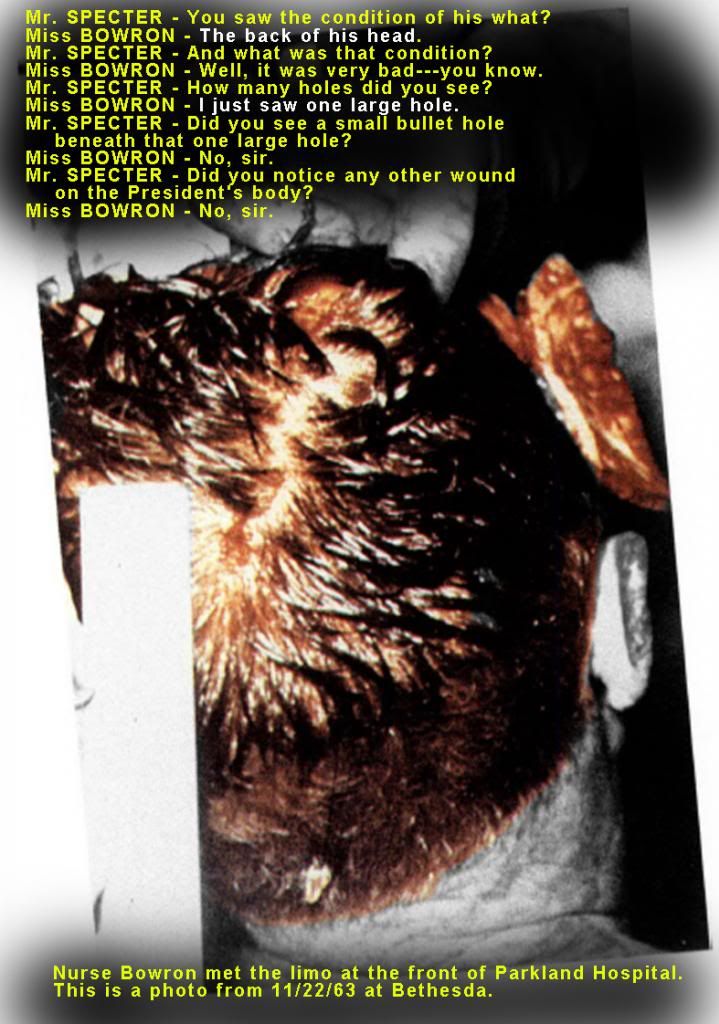
As a matter of fact, the BOH photo also shows no gaping wound nearer the top of the head, nor on the right side behind the ear. So even those witnesses who said that the wound was higher up or on the right side were shown to be wrong. That is, if one accepts that the photos are unaltered.
Looking at the above photo, one has to wonder how it is that so many witnesses at Parkland (nearly twenty) saw the gaping wound in the back. And how some saw cerebral brain matter oozing from the wound. Keeping in mind that these are medical professionals trained to see things like that.
Pat is forced to come up with excuses as to how all those medical professionals saw something that didn't exist. (Or he ignores anybody who asks.)
Those who oppose Pat accept what I think is obvious, that the photos have indeed been altered. The back-of-head photo in particular. Many of us also believe that the massive hole at the top was created by the cover-up artists, perhaps with a blunt instrument.
In order to support his theory, Pat has to choose primarily late-date testimony. Testimony that most of us realized changed because the witnesses discovered that their early testimonies were contradicted by the photos. And then, IMO, he leaves it up to his readers to find out for themselves that the testimony had changed over time.

This brightened back wound photo posted by Robin Unger does show a hole on the back of the head, it's just above the level of the ears.
-
Why does the head wound look so clean cut? If that was incised, shouldn't they do that after reflecting the scalp? And after taking photos to show to clear view of the natural wound? Other autopsy photos show something that looks like an incised wound as well, with very straight clean edges.
-
-
29 minutes ago, Sandy Larsen said:
Micah is ignoring the autopsists' testimony that the hole was on the margin of the blowout hole. Which means that there was NO hole unless the occipital fragment was in place. Which in turn means that that thing in the open cranium photo is not the EOP hole.
I take it you believe "chiefly the parietal bone but extending somewhat into the temporal and occipital regions." from the autopsy report was the truth, and all other revisions were lies?
I don't know, I can't deny that the spot on the open cranium photos is a perfect contender for the EOP wound. The autopsy doctors labeled those photos as "depicting missile wound over entrance in posterior skull, following reflection of the scalp" .
EDIT: Wait a second, Humes could've just confused finding a skull fragment with part of some kind of exit with a the entry.
-
30 minutes ago, Robert Prudhomme said:
I realize this, Micah. However, if it struck higher up (away from the base of the skull) it would be just as likely to punch its way through the skull bone and end up inside the cranial cavity. In order for this shot to exit the throat, the bullet had to have been travelling almost parallel to the curved base of the skull; striking the base a tangential blow and being deflected downward at a steeper angle.
I tend to withhold speculation once a bullet hits such a curved part of the skull, because you'd expect it to deflect a lot, possibly in unexpected ways.
-
1 minute ago, Robert Prudhomme said:
You do understand, Micah, that if a projectile (or part of a projectile) was to ultimately exit JFK's throat, it would have to enter just below the EOP and not at the EOP. If the entry wound was at the EOP, the bullet would likely penetrate the skull bone and, even if it should exit the skull in the front, the projectile would be much higher than the wound was on JFK's throat.
Not if it deflected a lot, which is what you'd expect from a bullet hitting that area.
-
12 minutes ago, Sandy Larsen said:
I believe this photo is a hoax, designed to show the BOH wound. In all the copies I see of this view, the lower part of the scalp is pitch black. Just like it has been painted in. You can't get this from them IMO.
The skull flap in this photo also appears at first glance to be at a different location than the BOH photos show. Those appear to show the skull flap forward the level of the ear, while this looks like it shows it firmly behind the level of the ear. Optical illusion?
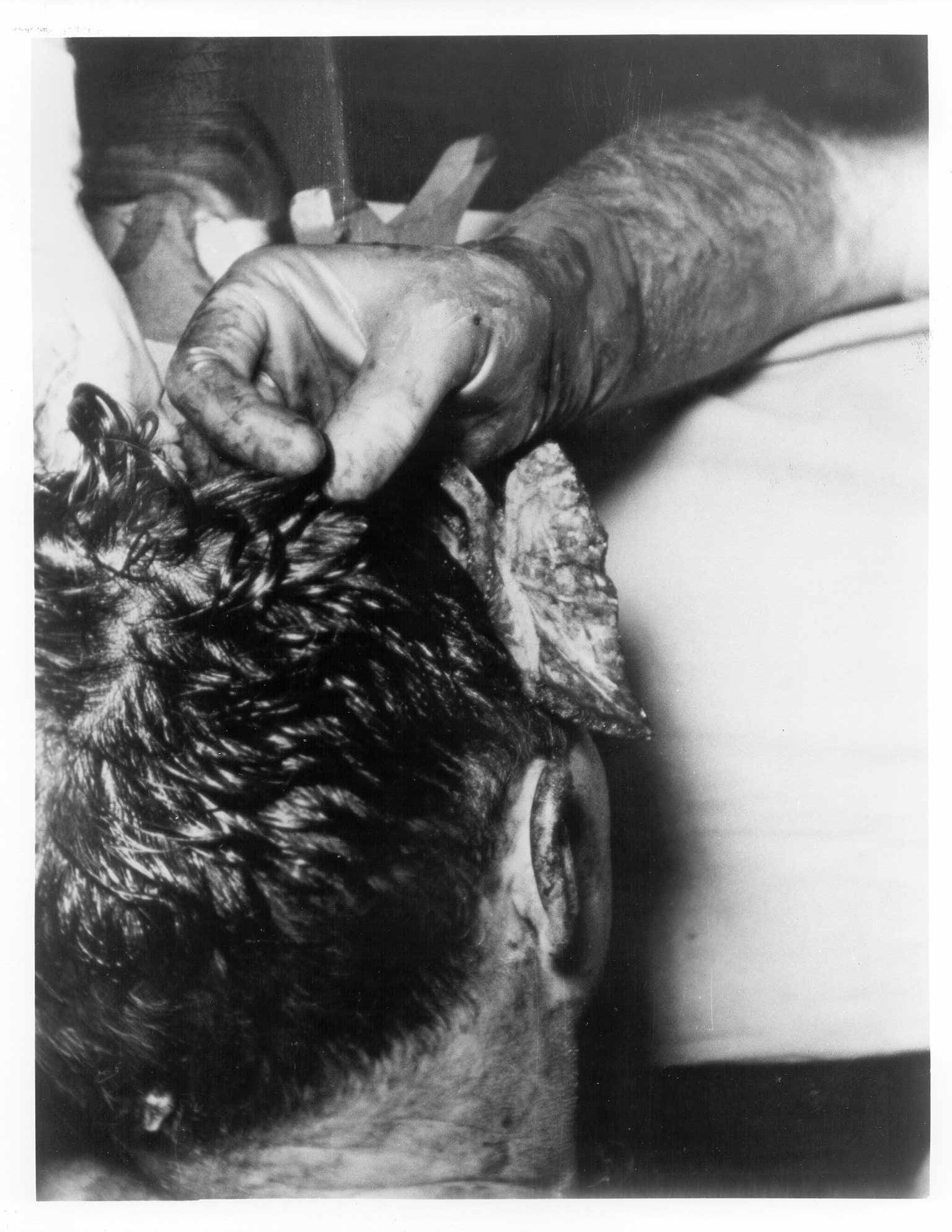
.gif)
-
-
1 minute ago, Sandy Larsen said:
I suppose it could be a hole. I don't know.
Pat has a long page for evidence that it is the EOP wound. Looks about right to me.
http://www.patspeer.com/chapter14%3Ademystifyingthemysteryphoto
-
Just now, Sandy Larsen said:
Beats me what that is. But it doesn't look like a hole to me.
Looks like a hole. Looks like you can see the edges of the bone.
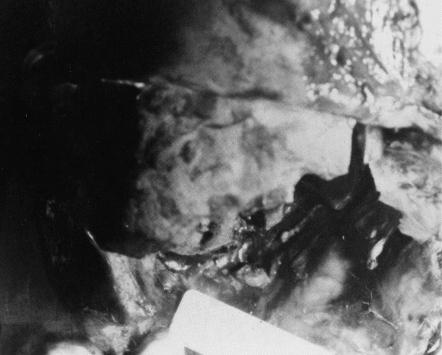
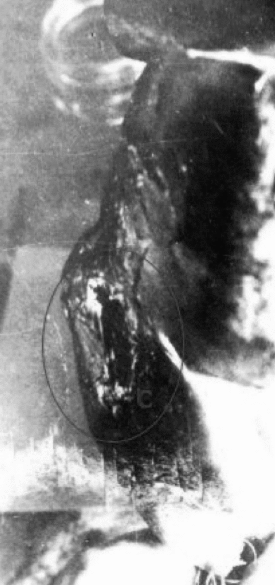
-
-
4 minutes ago, Sandy Larsen said:
Micah,There is plenty of testimony indicating that a hole was found in the scalp near the EOP, but not in the skull. It was only with the Harper fragment in place that a hole reportedly could be seen.
For example, in his HSCA testimony, Dr. Boswell said they had to dissect JFK’s scalp to see the entrance wound in his skull bone, “But not too much,” Boswell explained, “because this bone was all gone and actually the smaller fragment fit this piece down here – there was a hole here, only half of which was present in the bone that was intact, and this small piece then fit right on there and the beveling on those was on the interior surface.” Boswell later elaborated, "There was a shelf and then a little hole came up on the side and then one of the smaller of the two fragments in that X-ray, when that arrived, we were able to fit that down there and complete the circumference of that bone wound.”
In other words, half the hole was located on the Harper fragment, and the other half on the intact bone.
I personally doubt the hole really existed. But if it did, I think that only those very close up could make it out.
So what's on the open cranium photos?
-
10 hours ago, Tom Neal said:
When did the "EOP entrance wound" become an established fact like the hole in the back of the head, the back wound, and the throat wound? You guys are sure talking like it's a fact...
Everybody at the autopsy saw it, whether they care or do not care about maintaining the official story. The open-cranium photograph(s) may very well show it. If there was a hole in the back of the head, it couldn't have gone much farther below the level of the ears. That spot is reserved for the EOP wound, which poses equal or more of a problem than a rear blowout.
-
Just now, David Von Pein said:
But you still think the File Locator Number might be a fake?
I'm wondering if there's any way, in 2016, to understand almost exactly what those numbers mean and if they mean what they're supposed to mean.
-
Just now, David Von Pein said:
I heard that point, I read the whole thread over.
-
On 11/19/2015 at 5:30 AM, Sandy Larsen said:
Lance,
A ten-digit File Locator Number was no doubt printed on postal money orders in 1963. And the ten-digit number stamped on the Hidell MO is obviously a File Locator Number, or at least is meant to be.
You said earlier:
It appears that they are the "File Locator Number" placed by the Treasury Department, which would seemingly be a pretty definite indication that the money order was processed.
and now:
If the ten digits are a File Locator Number, I am satisfied this is the end of the story.
I respect you for you legal acumen, but to draw that conclusion IMO is utterly ridiculous. A File Locator Number could have easily been stamped on the money order by *anyone* . Isn't that obvious?
With the exception of the handwriting on the MO, I myself would have no trouble faking that money order as we see it today (a photocopy). Or even when I was a teenager. For heaven sakes, forgeries are not an uncommon occurrence. That's why I am astonished by your conclusion.
You yourself have provided proof that stamping bank endorsements on postal money orders in 1963 was at the very least practiced, and that automated machines used at the time were capable of quickly reading money-order punch-holes and stamping a bank endorsement without slowing the process down. In contrast, nobody has provided any evidence that the presence of stamps was optional. (And no, you can't used the the Hidell money order as evidence of that, given that it is the object of suspicion.)
The reason suspicion is being placed on the authenticity of the money order isn't because of missing bank stamps. It's because of a combination of numerous irregularities which, as a whole, scream "something fishy is going on here." The presumably-missing bank stamps is a tiny part of the puzzle.
You said:
To perpetuate the "mystery" would require an extremely far-fetched scenario: The conspirators had an inside contact at the Treasury Department who was able to place a File Locator Number, and they hoped no one would notice the absence of endorsements by FNB and the Federal Reserve Bank.
No. All that need be done is this:
- Acquire the services of a handwriting forger.
- Get a fake ID made for this person, using the name A. Hidell. (Not a big deal... I've seen fake IDs used by underaged teenagers to buy alchohol.)
- Have this person purchase a $21.45 money order using the ID.
- Either bribe the postal worker to stamp a "Mar 12 1963" date on the MO, or alter the stamp later .
- Purchase a stamp to mark the MO with a file locator number.
- Done!
If you plan ahead and have more time, there are other, easier ways of accomplishing the forgery.
You said:
The Treasury Department's records retention manual would dictate how long old postal money orders are stored. I didn't find the manual, but I did see references to 5 years and 10 years.
FYI, as I said earlier, money orders were destroyed after two years. According to CFR 171.5(a) (1970) "Money orders are destroyed 2 years after payment, and photostats cannot thereafter be furnished. [34 FR 1722. Feb. 5 1969]"
There's no information about what the file locating number 138 4159796 could mean or if it makes sense?



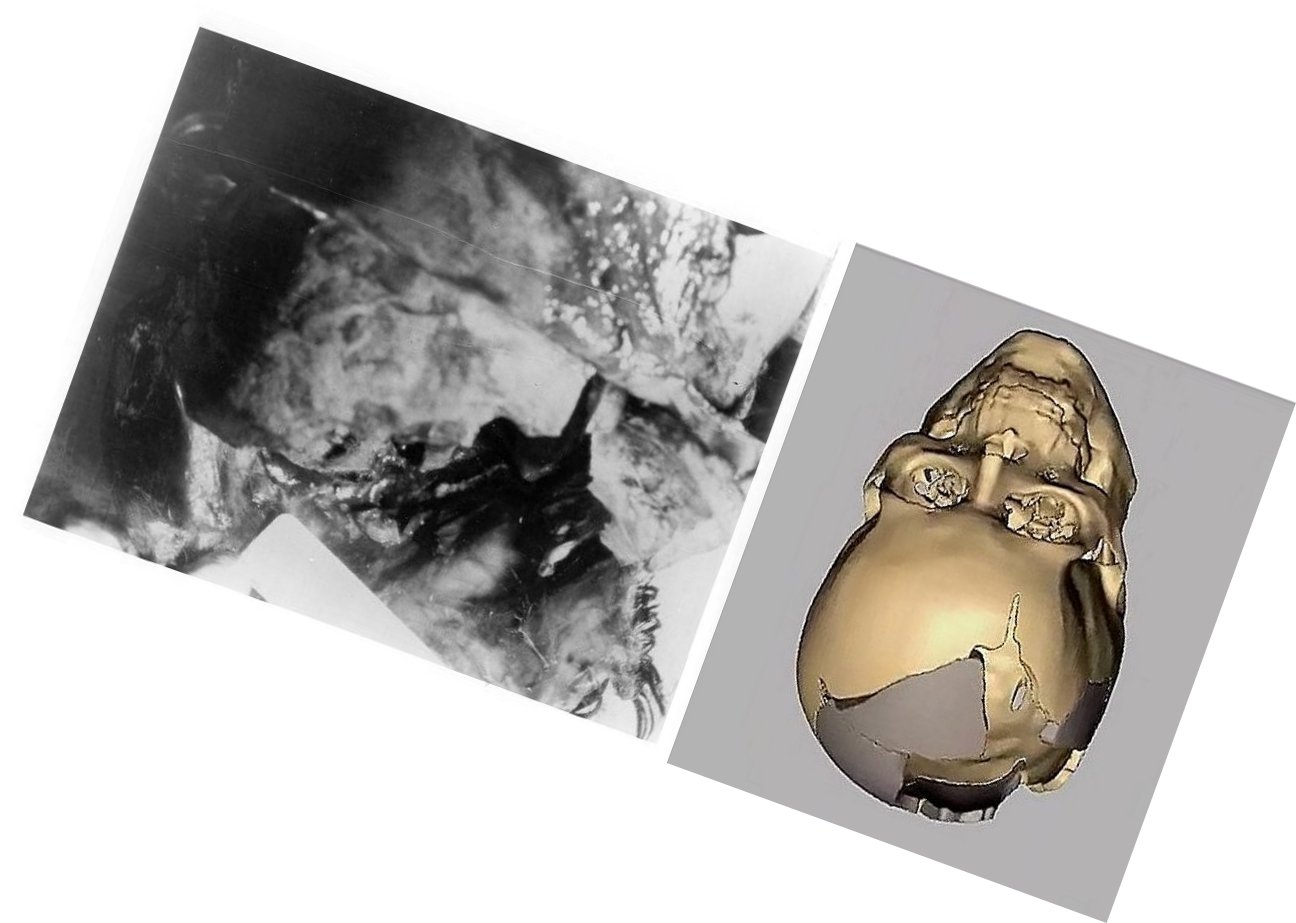


Yes, postal money orders do require bank endorsements!
in JFK Assassination Debate
Posted
This is on ebay.
http://www.ebay.com/itm/US-POSTAL-MONEY-ORDER-SAMOA-1961-BR6030-/171426606217?hash=item27e9d26c89:g:g7wAAOSwxCxT80Ck
This is uncashed?